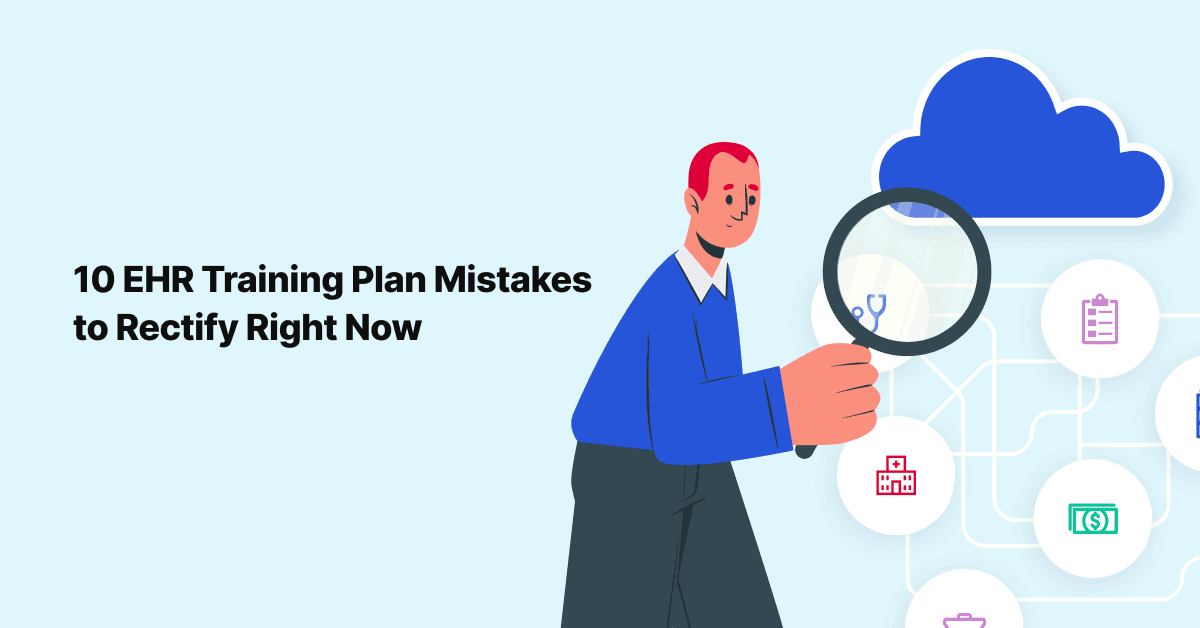
10 EHR Training Plan Mistakes You Need to Rectify Right Now
If your EHR training plan has stood the test of time, it's time for a check-up.
Let's scrutinize its …

There is no doubt that some of the best resources available to support hospitals and health systems implementing Epic is their own staff. Knowing the ins-and-outs of a given organization provides incredible insight and expertise that any healthcare IT initiative would be foolish to pass up. Use case requirements are far more salient and impactful when considering local needs and unique initiatives of a given care community. Now, imagine the exponential power of augmenting an EHR implementation team with external SMEs to develop solutions that address past, present, and future clinical and administrative needs! Bringing in certified Epic trainers, for example, is an ideal strategy to not only fulfill the instructional requirement for end users for a new or upgraded EHR, but to also incorporate a more holistic perspective of use cases and technical opportunities. Aligning local experts with industry experts is a recipe for successful Epic adoption and real traction for long-term organizational growth.
Let’s look at three key ways that bringing in Certified Epic Trainers can benefit hospitals as they roll out EHR implementations, upgrades, and optimizations.
One observation we have from working with hundreds of clients is that on-staff Epic Super Users and those tapped for Train-the-Trainer deployments during the implementation process can drive facility-specific use cases and workflows like no other. However, there can at times be a degree of shortsightedness for all the potential opportunities for optimizing existing workflows to better capture discrete data, support interoperability, or any other initiatives that may build upon day-to-day patient care. This is where bringing in an outside perspective of a Certified Epic Trainer can help address the point-of-care training points while also helping to broaden horizons for getting the most benefit from an EHR solution like Epic.
Another benefit to hiring experienced trainers (versus clinical-staff-cum-instructors) is that not only do hospitals get Epic-centric best practices, but also adult learning best practices as part of their instructional methods. Adult Learning Theory explains that adults obtain information and engage very differently than children (given we often equate and develop learning environments with traditional school as our primary anchor point). Cultivating readiness for Epic training as well as conveying purpose, concrete applications, and incentives for participation are paramount, for example, and this requires time and focus that busy Super Users may not have the bandwidth to support.
Epic Certified Trainers also have tremendous experience with various instructional delivery methods, from classroom settings to digital learning applications for EHR training. We’ll touch on this more in a moment, but the benefit of outsourcing is that hospital stakeholders can offer up the best of the best when it comes to this critical component of Epic implementation.
The last reason we’ll mention for bringing in professional Epic training resources is that experienced instructors can leverage the most innovative tools for reaching busy clinical end users in a variety of methods to best drive attendance, participation, and ultimately retention. Training is a vital precursor to the Epic Go-live phase, so ensuring that there are several modes of instruction available — such as traditional classroom and on-demand digital modules — to best meet the needs and abilities of all hospital staff and clinicians will go a long way in driving adoption and optimal use of the EHR.
Epic trainers can develop and maintain the training environment and materials to ensure the most up-to-date information is available, and that users can easily access (and re-access, importantly) the content throughout the EHR’s ever-evolving lifecycle. This is also key for supporting organizational turn-over and sustaining scale and growth, especially as health systems grow and acquire new facilities/practices.
Join over 3,200 subscribers and keep up-to-date with the latest innovations & best practices in Healthcare IT.

If your EHR training plan has stood the test of time, it's time for a check-up.
Let's scrutinize its …

Part 3 of 3: Jerrie Rankin, VP of Operational Informatics with Baylor Scott & White Health, and Nicholas …

There are many ways that a health system can choose to implement an EHR, such as Epic. Some take the slow and …